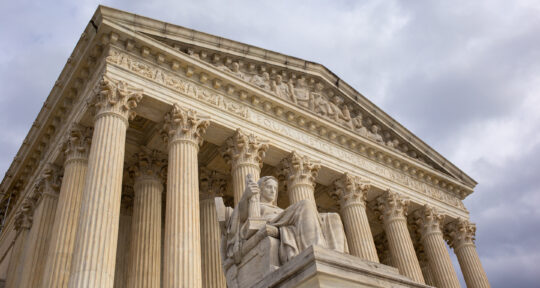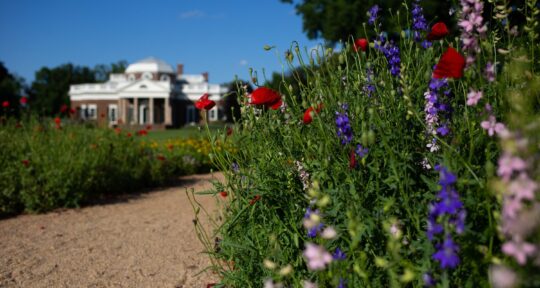When D.C.-based, Baltimore-born artist Suzanne Brennan Firstenberg planted her first white flag in a field outside RFK Stadium to represent a life lost because of COVID-19 last fall, the death toll hovered below 300,000. A year later, Firstenberg’s flags are back in the nation’s capital, this time on the National Mall. The installation, In America: Remember, includes flags from the original display—and hundreds of thousands more.
When I first visited In America: Remember on September 18, the number displayed was 670,032. Two days later, the installation had grown by 3,452 flags—more than the total casualties on September 11, 2001, one of the deadliest days in U.S. history (because of the pandemic, several days in 2020 made this macabre list).
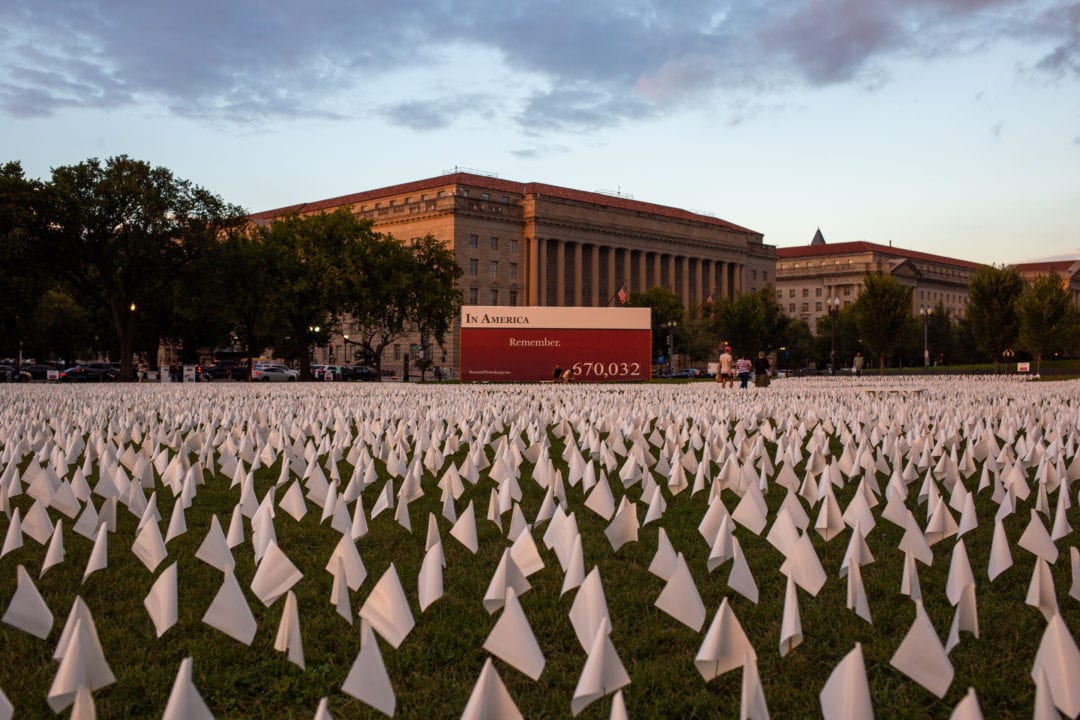
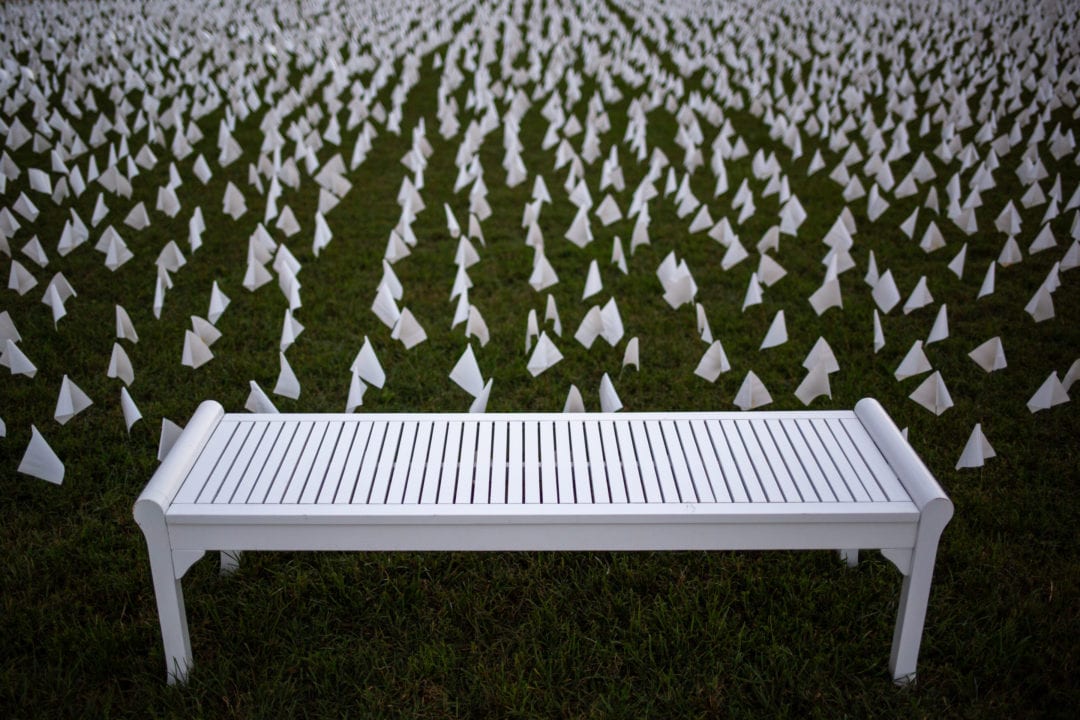
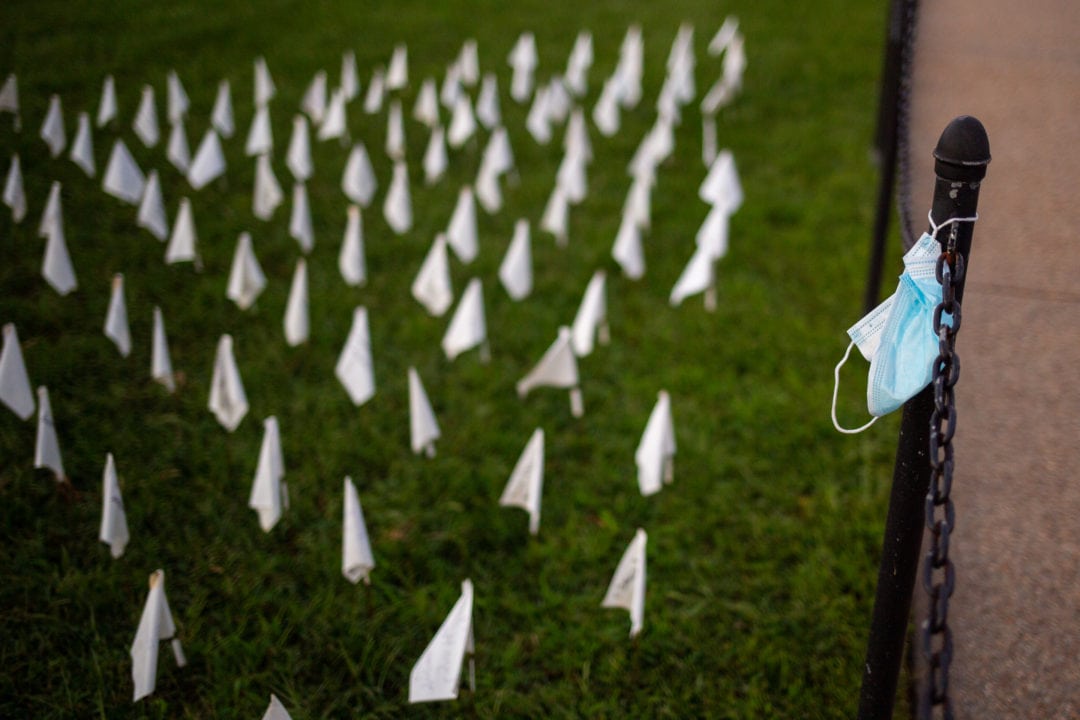
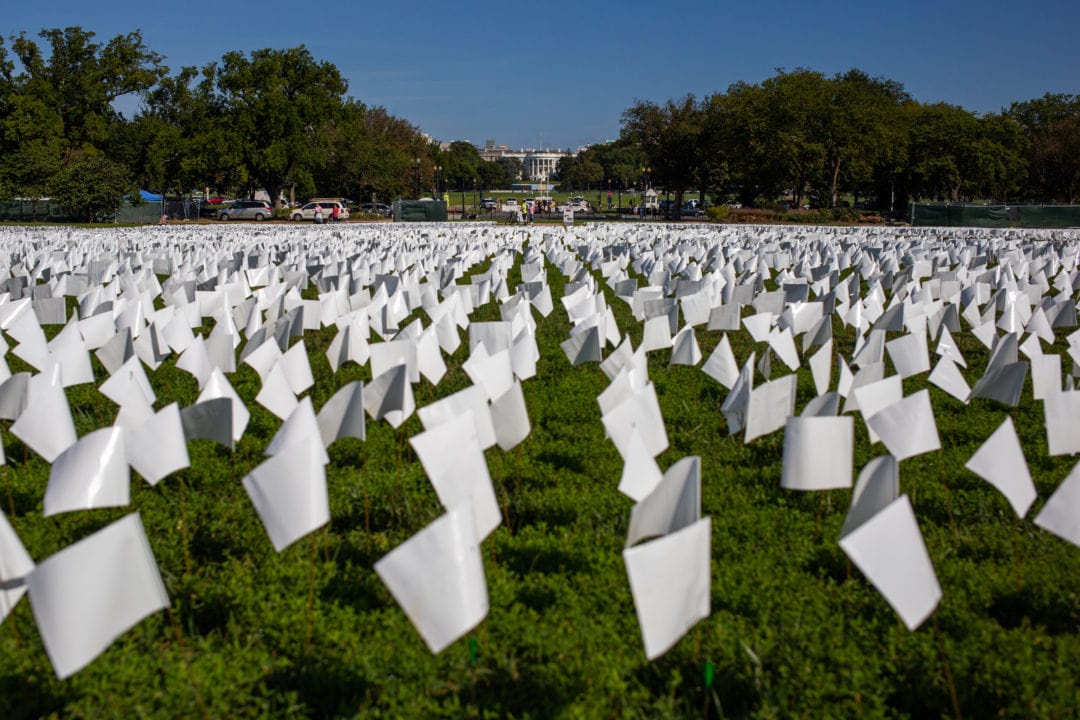
Over the last year and a half, more than 42 million people in the U.S. have been infected with the coronavirus, and as I write this, at least 673,484 people have died because of it. The grim statistics are far from static; although vaccines have helped staunch the flow, the pandemic is still ravaging almost every corner of the country.
Death may be the inspiration, but memorials are created by, and for, the living. Firstenberg’s installation compels visitors to “remember,” and benches are placed throughout the seemingly endless, neatly-arranged rows to facilitate quiet moments of rest and reflection. The expanse of undulating white flags—interrupted only by the occasional dragonfly or group of tourists—is deceptively simple, yet effective.
“When a nation is in the midst of trauma—and this is truly a large-scale, slow-motion, mass-casualty event—it’s hard to really conceptualize it,” Firstenberg told the Washington Post. “I knew as a visual artist that I had to create art that would help people understand the magnitude of this loss. So I arrived at the idea of planting flags. A flag will ripple in the wind and interact with the environment. And the mass of them would really look like what it really was at that time: a flag of surrender.”
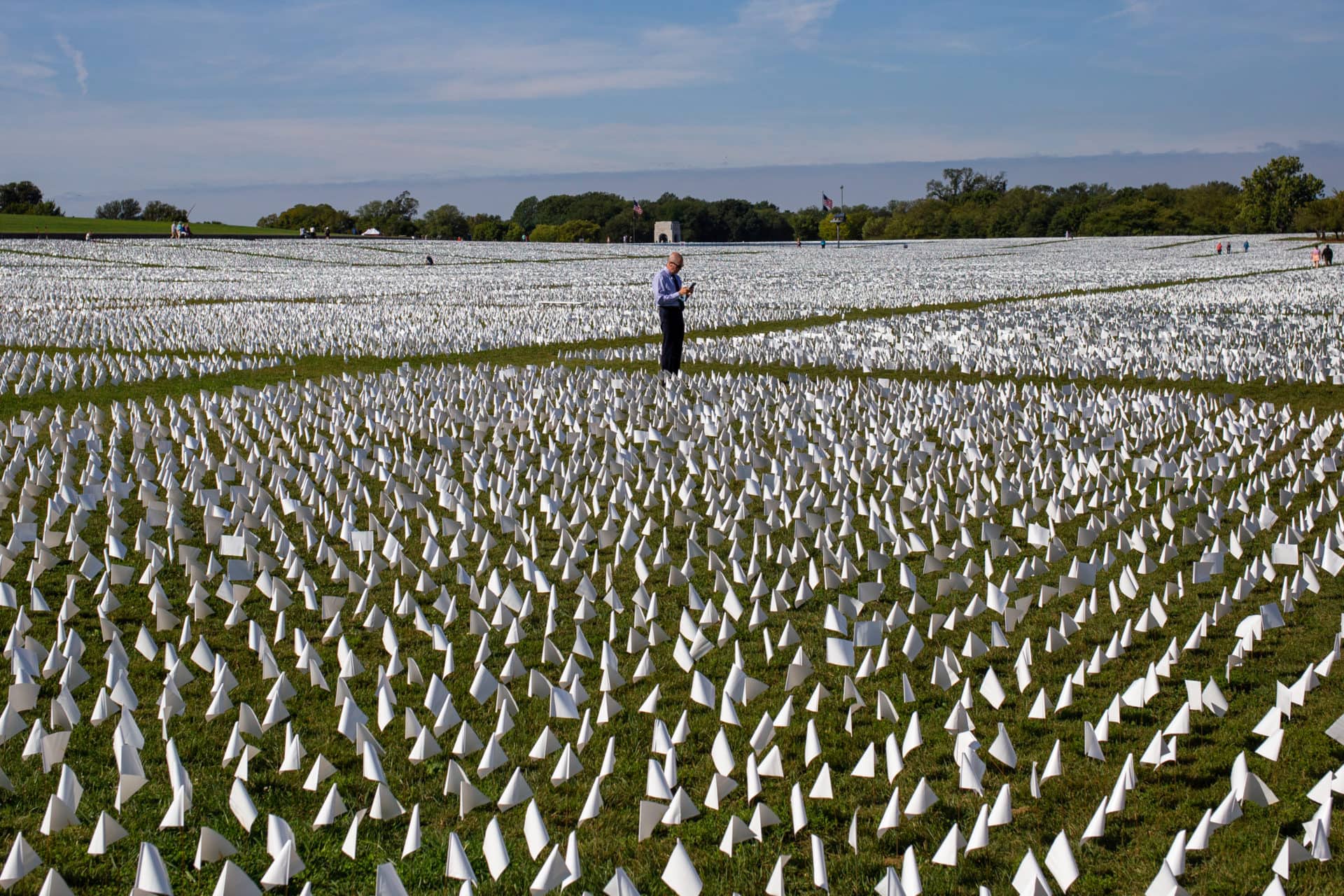
‘His family was his world’
Some of the small plastic flags are personalized in black Sharpie with names, dates, and heartfelt epitaphs. Flags written in English, Spanish, and several other languages are dedicated to beloved mothers, sons, and friends. Two represent a grandmother and grandfather who died within 2 weeks of each other. “Missing you beyond words,” says another. “His family was his world,” says one dedicated to father of three and grandfather of seven. “Funniest guy!”
Red dots denote healthcare workers who succumbed to the disease they were helping to treat. In most sections, the personalized flags are surrounded by a sea of blinding white; the majority might be blank, but together they speak volumes. One flag reads, “I’m so sad you’re not here with us.” The message is both extremely personal and universal. We’re all in this together—until, suddenly, we’re not.
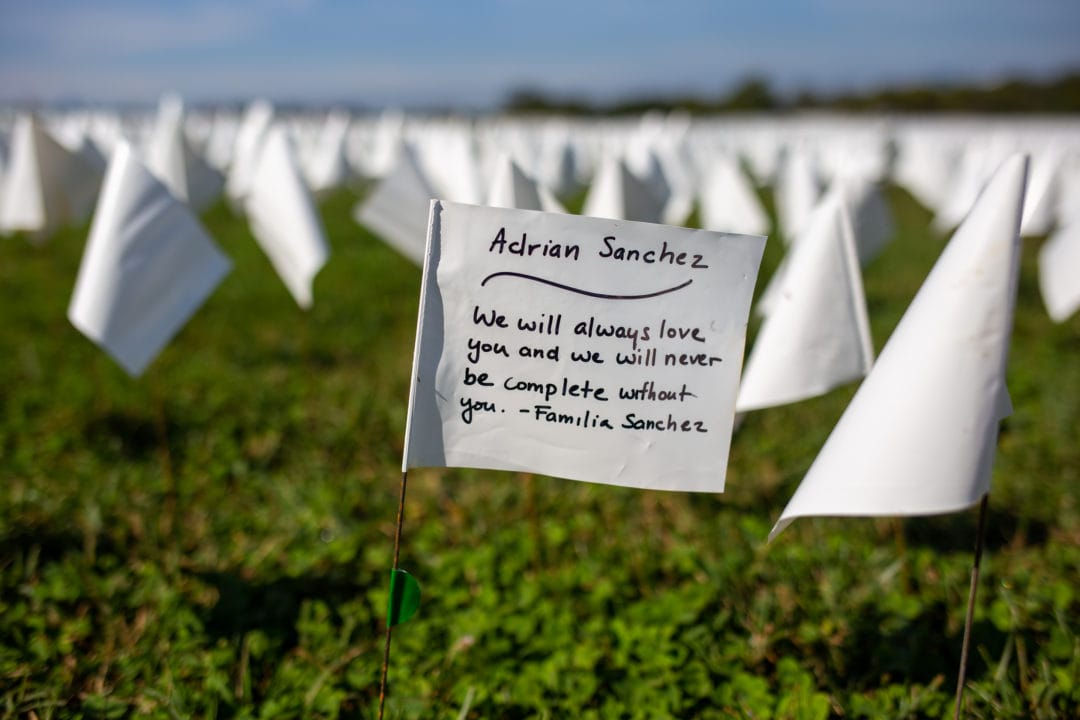
I’m fully vaccinated but immunocompromised, and currently recovering from my second round of COVID-19. During my recent 10-day quarantine, further isolated from the outside world by the loss of my sense of taste and smell, I feared both forgetting and being forgotten. I was being a bit dramatic; in the context of what I hope will be a long and full life, 10 days of Netflix and naps is a footnote.
But perspective is a fickle thing. If one death is a tragedy, then what is hundreds of thousands of deaths? How do you represent both an individual and a national nightmare? The Vietnam Veterans Memorial, located less than a mile west of Firstenberg’s installation, is inscribed with more than 58,000 names. When the AIDS Quilt was displayed for the first time on the National Mall in 1987, it contained 1,920 panels. A year later it had grown to 8,288.
No one can guess for sure how many flags In America: Remember will contain when it ends, but one thing is certain: The COVID-19 death toll will keep growing for the foreseeable future—and Firstenberg and her team of volunteers will be planting new flags daily until early October, trying their best to keep up with the new numbers, each more unfathomable than the last.
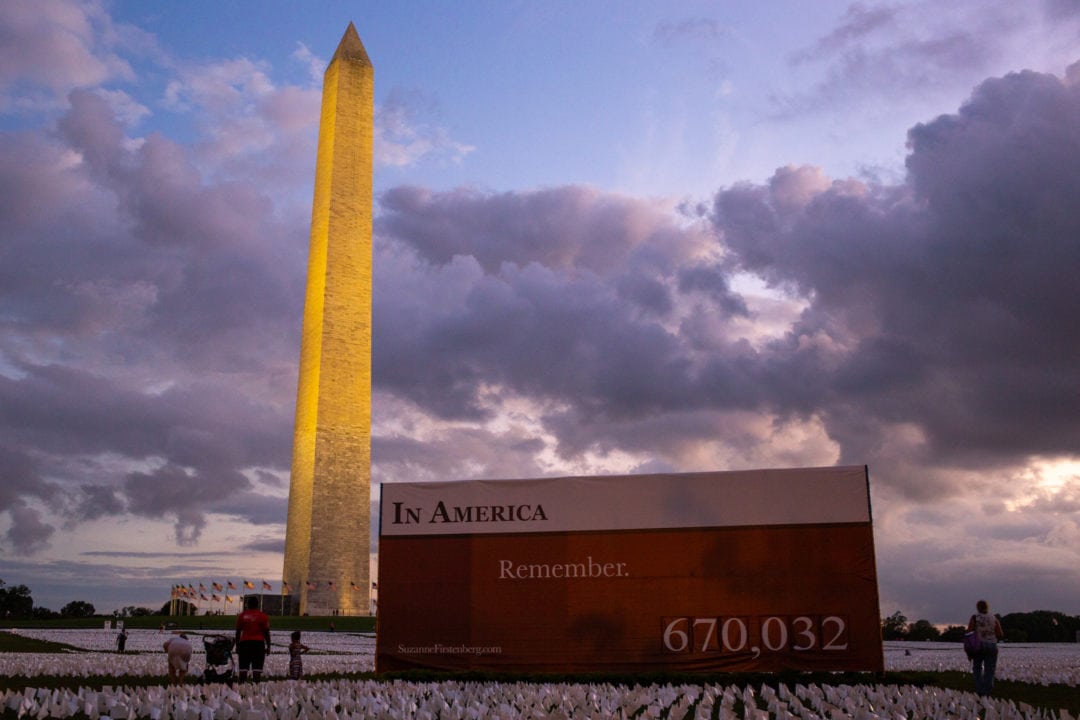
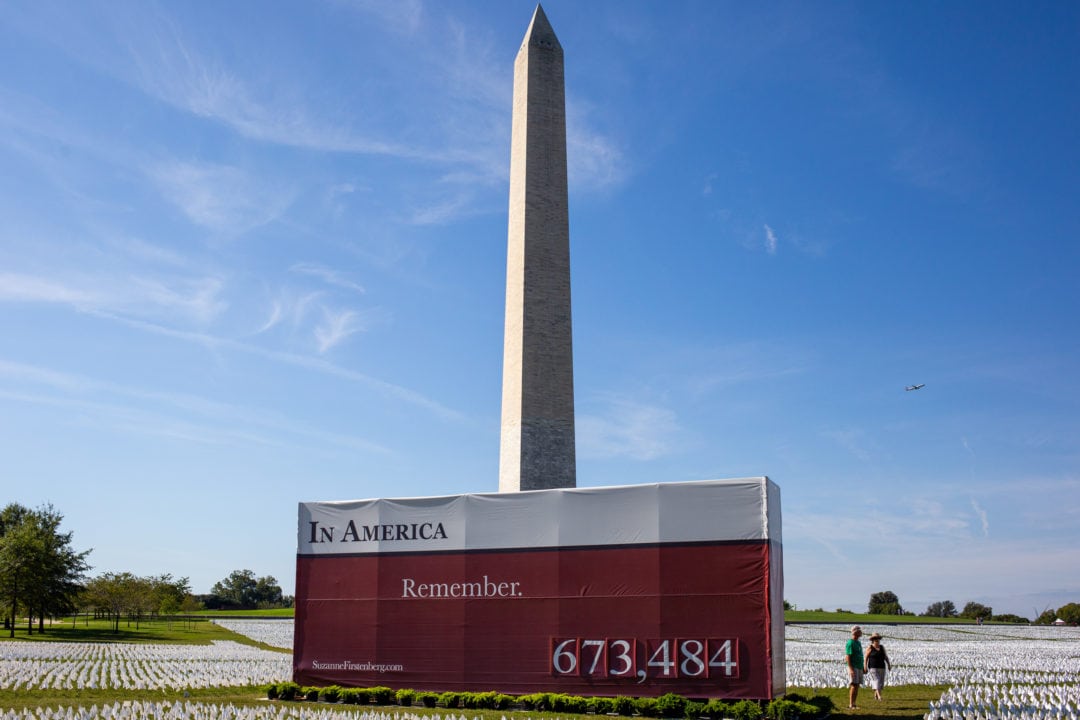
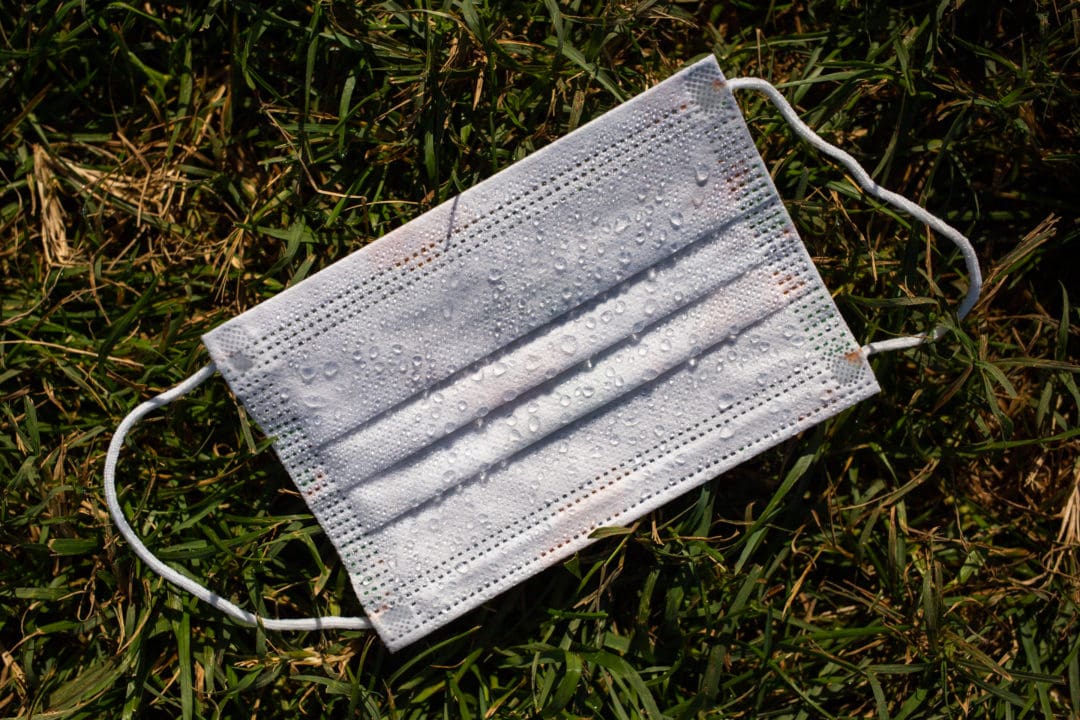
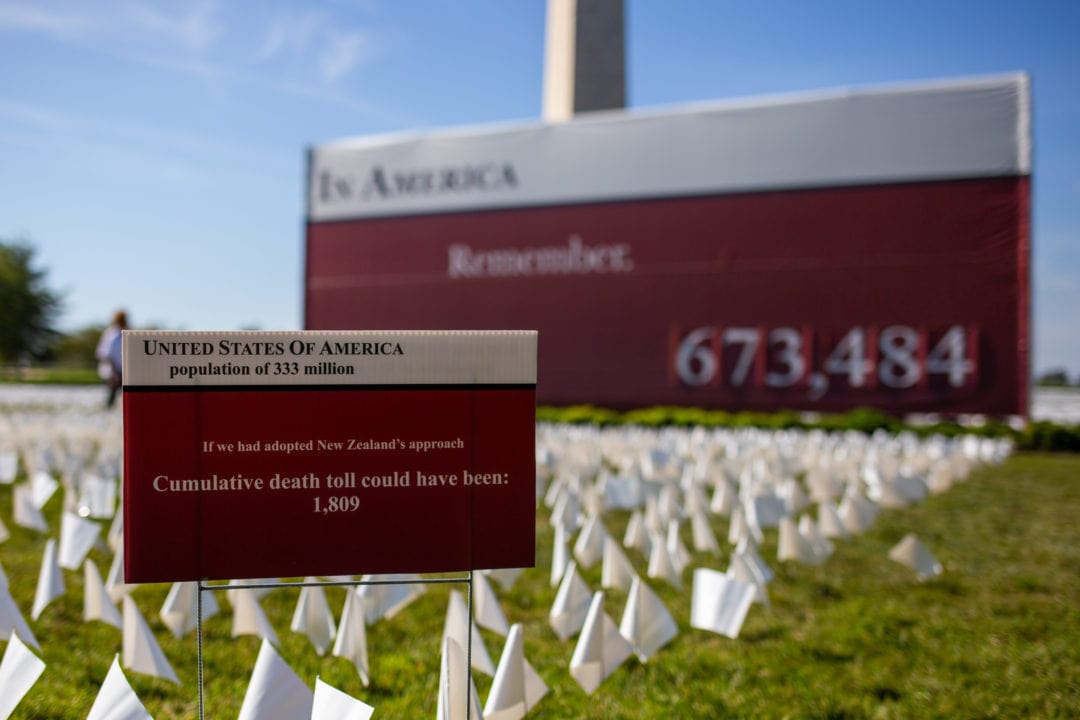
If you go
The field of flags will be on display between 14th and 17th Streets NW until October 3, 2021. Visitors wishing to dedicate a flag can fill out a form on the installation’s website until September 30th or stop at on-site tents located between the Washington Monument and the National World War II Memorial.

